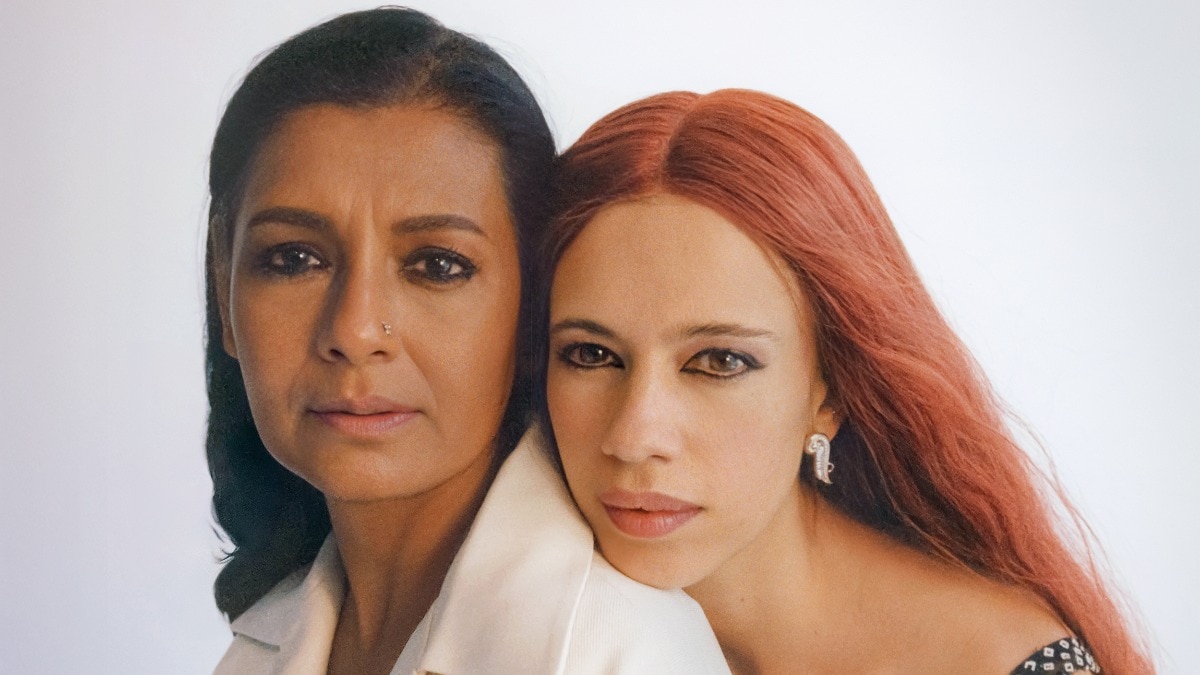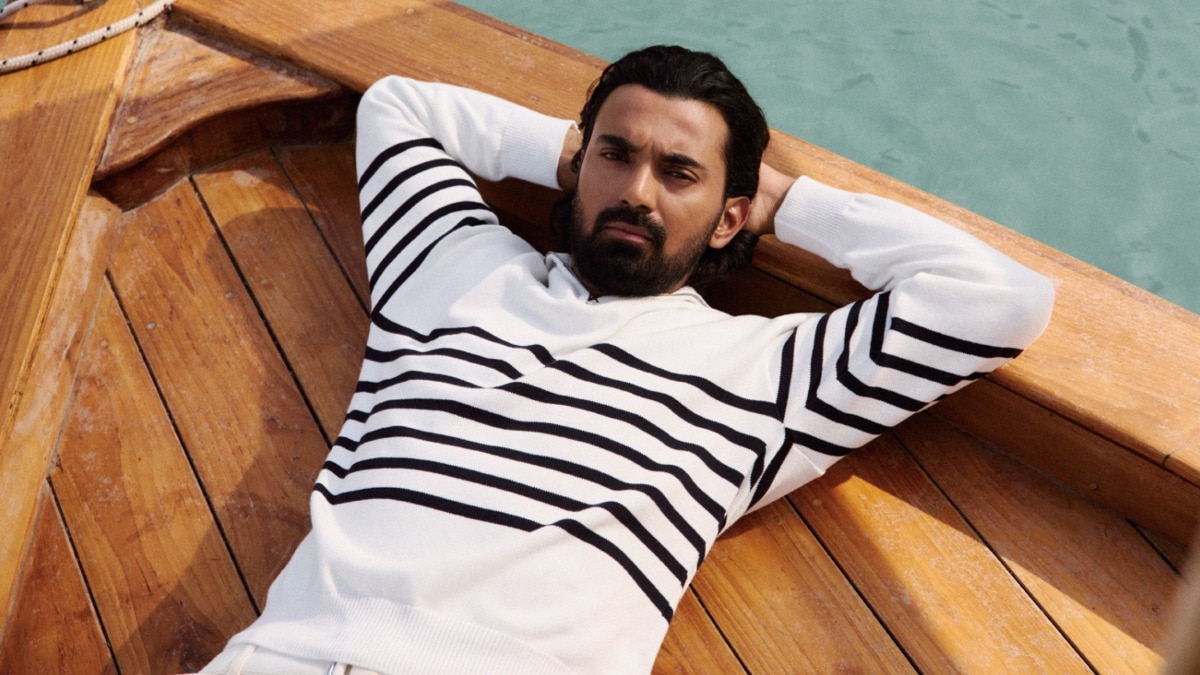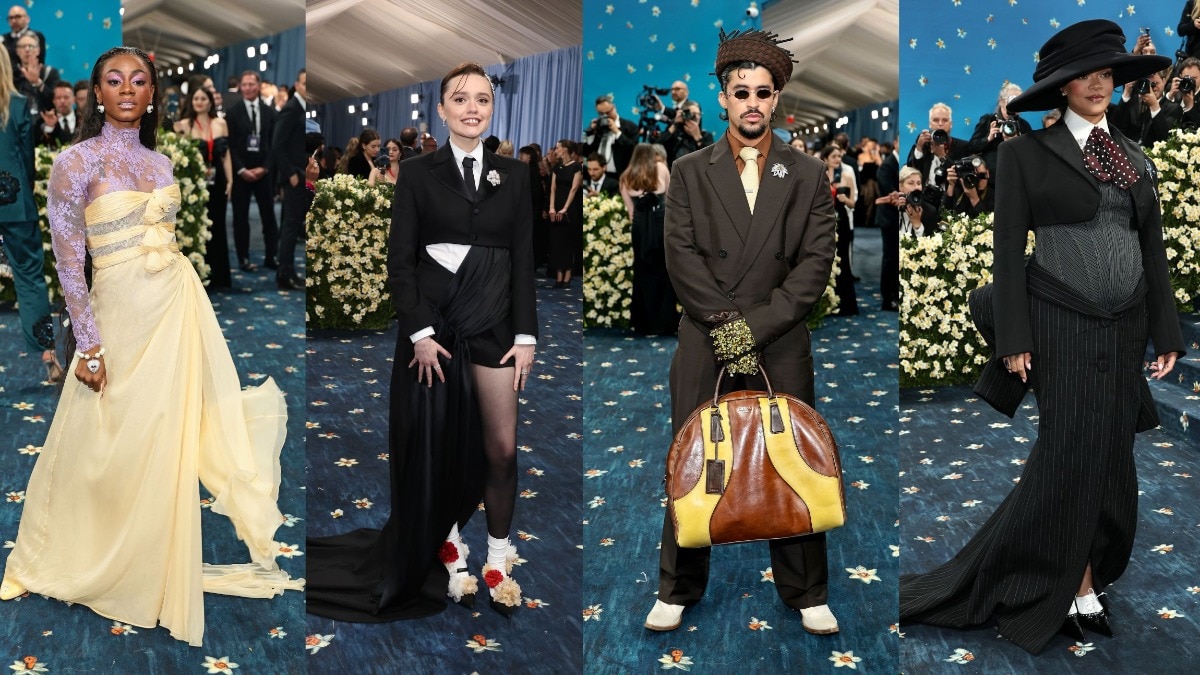Three Indian art curators and an art patron share insights about this season's best art exhibits
Read about the upcoming Kochi-Muziris Biennale, Serendipity Arts Festival and Amdavad Art -é-Summit


In 1929, when Alfred H Barr became the director of the Museum of Modern Art in New York, at the age of 27, his first two solo exhibitions, focusing on the work of Henri Matisse and Diego Rivera, laid the groundwork for the nascent museum. His 1936 exhibition Cubism and Abstract Art, with his diagrams that traced the influences of modern art, was crucial in establishing a legacy. It was under his tutelage, until 1943, that MoMA showcased important exhibitions like an Edward Hopper retrospective and the U.S. debut of Picasso’s storied anti-war mural Guernica. And he was pivotal in securing many major acquisitions, including Picasso’s Les Demoiselles d’Avignon (1907) and Henri Rousseau’s Sleeping Gypsy (1897).
We now know MoMA as an important bastion of modern art, and Barr’s indispensable role in curating it is well known with art enthusiasts around the globe. And today, curators follow the legacy created by Barr and many more like him who laid an early foundation of the work that goes into organising groundbreaking work, forward-looking exhibits, and initiatives intended to spur creative thinking.
We interviewed three curators and an art patron from across India on their latest curations and what went into creating the stories that we see displayed on the walls and installations of the biggest biennales and art exhibits of the year.
Shubigi Rao, artist, writer, filmmaker, and curator of the 5th Kochi-Muziris Biennale, 2022

The Kochi-Muziris Biennale is an international exhibition of contemporary art that takes place in Kochi, Kerala every year. It is the largest art exhibition in the country and the biggest contemporary art festival in Asia.
Where and when: 2 December-10 April, 2022, in Kochi, Kerala
Harper’s Bazaar India: What does culture and art mean for you?
Shubigi Rao: The arts in any form are how we process our realities, and our imagined worlds. It can be where we find ways to resist powerlessness, and to share ideas and stories. It can hold the yearnings of our species, our disillusionment, our fierce satire, and our transgressive resistance. The arts are where we fill in the gaps between us, gaps that language cannot cross.
HB: What are the key things you keep in mind while choosing an artist whose work you want to champion?
SR: I don't champion any one artist over another, as I feel that diverse artistic practices should not be compared. Hierarchical rankings are unhealthy. Having said that, what I look for is a fidelity between idea and its realisation in practice. I look for manifold, layered practices, or ways of thinking, and for artists who are keenly aware of their environment, and are able to translate all of this into distinctive forms.
HB: Tell us more about the theme of this year’s and how it is different from each year?
SR: A biennale is held every two years, but in this case, because of the pandemic, we are opening after a gap of 4 years since the last edition in 2018. Shaped by post-pandemic shifting realities, this edition of the pandemic looks at how we survive, through song, materiality, joy, humour, and through language, whether written, verbal, and nonverbal. Grief, anger, resistance and story are all present here. In my curatorial note from 2019 I wrote: "This edition of the Kochi-Muziris Biennale therefore embodies the joy of experiencing practices of divergent sensibilities, under conditions both joyful and grim. There is optimism even in the darkest absurdity, and this is what leavens the direness of our time. It is in the robustness of humour that we can imagine the possibility of sustained kinship, and remember that we are not isolated in this fight." I believe this still holds true.
HB: What's your curator's process?
SR: I travelled extensively for my research in 2019, and looked largely at the so-called global south, at artists from Asia, Africa, South America and so on. I visited and listened to a lot of very different practices, and brought together artists who I believe share connections of sensibility, thinking, and materiality in surprising and unexpected ways. I tend to reject the single narrative, choosing instead artists who understand the act of questioning that is inherent in the artistic process, and one that I see mirrored in the curatorial one.
HB: Internationally, which are some of the festivals: art and music, which you like and don't miss?
SR: While the bigger biennials and triennials like Venice, documenta, and so on are usually big draws (and this year both were radical for many reasons), I find that smaller biennials can often be more exciting. I don't have 'unmissable' events though, as my schedule rarely allows me to consistently visit the same events every time. I highly recommend regional film festivals—they often provide the most incisive and illuminating experiences.
HB: What role do you think art festivals, exhibitions, and summits play in shining a light on indigenous art practices and mediums?
SR: As of now, not enough, in my opinion. Till we actually hand over the reins, or at the very least support indigenous communities in self-determination and autonomous positions of decision-making, we will probably see more tokenism than enduring formats of indigenous representation and governance. We need to stop centering mainstream attitudes, power, and influence, especially when the conversation is about indigenous and overlooked practices.
Smriti Rajgarhia, director, Serendipity Arts Foundation & Festival

The Serendipity Art Festival is the largest multidisciplinary not-for-profit festival of arts in South Asia, conceptualised with a vision to energise arts production, awareness, and practice.
Where and when: 15-23 December, 2022, in Panaji, Goa
Harper’s Bazaar: What does culture and art mean for you?
Smriti Rajgarhia: I have grown up around art and design. For me it has made me who I am. I believe that my exposure to culture growing up created a new way of seeing for me, and for assimilating my surroundings. In a larger sense, I feel that arts and culture are all encompassing. Whether we choose to acknowledge it consciously or not, its contribution to the way we frame the world is undeniable.
HB: What are the key things you keep in mind while choosing an artist whose work you want to champion?
SR: The Foundation primarily works with younger emerging artists and writers from the region who are awarded grants and residencies. With the Festival, we work closely with our curators who formulate the programme based on broad themes of interdisciplinarity. Our main goal has always been to champion artists from the South Asian region, but with this edition, we are also featuring the work of many international artists to introduce audiences at SAF to performances and exhibitions from around the world. We like working with people who are willing to experiment and try our newer formats. Being a not-for-profit space, the kind of artistic practices that we can support can have a wider view as it is accessible to a larger audience. It makes it tougher for the artists but also a lot more holistic for the artists and the festival.
HB: Tell us more about the theme of this year’s and how it is different from each year?
SR: More than a theme, the festival is based on a broad set of ideals like experimentation, access to the arts, interdisciplinarity, and sustainability. We create a mandate with these broad areas and more to lay down the foundation for the programming. Which area gets highlighted eventually varies year on year depending on the current world views. As an institution, we have been looking at breaking away from the idea of limiting conversations within the discipline and encouraging a conversation between different genres of arts, disciplines and mediums such that we can expand the canvas for the arts ecosystem. For us, the festival has been a space where we have been able to try new kinds of programming, to see new themes emerge every year, and to see how creative placemaking can impact a space.
HB: What's your curator's process?
SR: Each curator has set their own creative process for Serendipity, and that is what really brings in the depth and deliberation in the programme. The curators are given our mandates and asked to address them in whichever degree they seem fit. As a team, we ensure that what the curator sets out to do is facilitated and brought to fruition at the festival. The interesting thing is that even though each of these eminent curators come from different backgrounds, each year, there has been an underlying theme, the current world view that emerges as the programming solidifies. And this is really what ties the festival together. Some curators address the global aspect of practice, while some refer back to the roots while some might even pay homage to the history that brings us together as a subcontinent, each year the process emerges from the curator's ambition and intuition.
HB: Internationally, which are some of the festivals, art and music, that you like and don't miss?
SR: This summer we were at Rencontres D’Arles with a project from the Serendipity Arts Foundation, and it was one the most enriching experiences that we have had. Individually also, the way the festival takes over the city of Arles, bringing together community and visitors for a photography-based festival was inspiring. It takes place every year and it’s a do not miss event of the year.
HB: What role do you think art festivals, exhibitions, and summits play in shining a light on indigenous art practices and mediums?
SR: All practice has a role to play, all contemporary practice that we see is inspired, derived from a reaction to another form of practice, are a crucial aspect of any region’s cultural heritage. A lot of traditional art practices across disciplines sometimes have a considerable capital cost, both human and commercial capital, when it comes to a full-scale production, so it also becomes more conducive to put up a showcase by the artists for a big festival or summit. Additionally, such events attract a wide range of audiences from across the globe, which helps in opening up a whole new segment of buyers and patrons for the practices. We just need to acknowledge that art is not the end, but the means to achieve multiple goals at the same time.
Khushboo Bagga, art patron and Priyanshi Saxena, curator, Amdavad Art - é – Summit

Originally titled Art é Fair, Amdavad Art - é - Summit is all about exhibiting the best works of art, design, and culture that define our times. This year’s summit is based on the concept of an immersive experience and titled Asaase –e – Daur | The heritage of our times.
Where and when: 25-27 November, 2022, in Ahmedabad, Gujarat
Harper’s Bazaar: What does culture and art mean for you?
Khusboo Bagga: Art and culture is a integral part of society; holding the ground of history, memory, and civility. It’s a mirror reflecting the image of that particular society, it’s whereabouts etc. It provides various opportunities of personal growth and learning. Also a medium of entertainment and leisure. To me, it means an expression of creativity. I believe, art brings people together, and culture helps to appreciate each other with their diversity.
HB: The festival has stepped away from a traditional exhibition format to showcase art from a different perspective—what was the thought process behind the decision?
KB: Changing the narrative of art fairs from all things commerce and taking it to a cerebral forum. As a foundation, we want to affect discourse. So we stepped away from the tightrope of selling and rebirthed Art e’ Fair as a summit, concentrating on exhibition the best works of art, design and culture that define our times , and further the evolution of art aesthetics and ideas.We endeavour to reinvigorate the culture scene in Ahmedabad. We will highlight exclusive, exquisite works of art in indigenous mediums like textile, metal, marble and ceramics. And with each passing edition, we will aim to explore ideas of Indian-ness, history, identity, and mediums further. We’re looking to bridge the gap between the old and the new, and aid in defining a truly nouveau Indian aesthetic and language. We also want to connect with our roots, and one can see that in the promotion of Gujarati language, even in our logo. The show will change the way we look at art in the future. We are presenting materials generally used in craft, and presenting them in the art space; bringing back the spotlight on traditional mediums of art in South Asia.
HB: Tell us more about the curatorial premise of this year’s summit Asaasa - é - Daur/ The Heritage of our Times?
Priyanshi Saxena: I am keen in resurrecting 'Indian mediums of Art'; and therefore I looked at practices that are living with the historicity of mediums, and contemporising the language of aesthetics, concepts, and design with these mediums.
HB: What role do you think art festivals, exhibitions, and summits play in shining a light on indigenous art practices and mediums?
KB and PS: One learns about art from seeing, and any large public exhibition of this proportion platforms practices not readily available to the public. On seeing art, our ideas, thinking, and perspectives widen, and our horizons of thought expand, not just for other artists, but even as audiences, seeing good art affects one, and also, the discussions, conversations, and presentations we are having with the summit, are looking at aiding people in reading art.
HB: What are the key things you keep in mind while choosing an artist whose work you want to champion?
PS: I specially chose to highlight practices I felt fit the curatorial premise, and would work well for the astute audiences of Ahmedabad. It was a delicate balance of young, mid-career artists, designers, and even people in the fashion space, who all work with a very strong sense of material, and aesthetic. Take for example Jagannath Panda, who uses textile on his work, as painted strokes, or Raj Shroff, who uses collages of textiles to detail narratives (flattening time, and depth, just like miniature paintings); or Ayesha Singh, who uses metal, but to make hybrid drawing sculptures; and even a master artist like Himmat Shah, who wove live, and emotion in metal, with his famous metal heads.
HB: What's your curator's process?
KB and PS: The primary process is extensive research of what most art practices in India art, trying to cast a web as wide as possible (a network of friends who are curators, artists, art academics, or writers helps!) And then narrowing down to discussing the curatorial concept with prospective artists, and choosing the works that most fit the premise. And lastly, elimination of options based on practical reunifications, as some works are too delicate to transport, or have some bounds, which the summit's bandwidth can't fulfil. But hopefully, in future editions, we will make exhibitions that are bigger, and grander in scale, scope, and impact; hopefully traversing some of these bounds.
HB: Internationally, which are some of the festivals: art, film, and music, which you like and don't miss?
Khusboo: Internationally I make sure to visit the Venice Biennale, an international art exhibition featuring architecture, visual arts, cinema, dance, music and theatre. I would love to visit Art Basel Miami, Frieze London, and Burning Man festival soon.
Lead image: Amdavad Art E Summit, 2022, Ahmedabad










